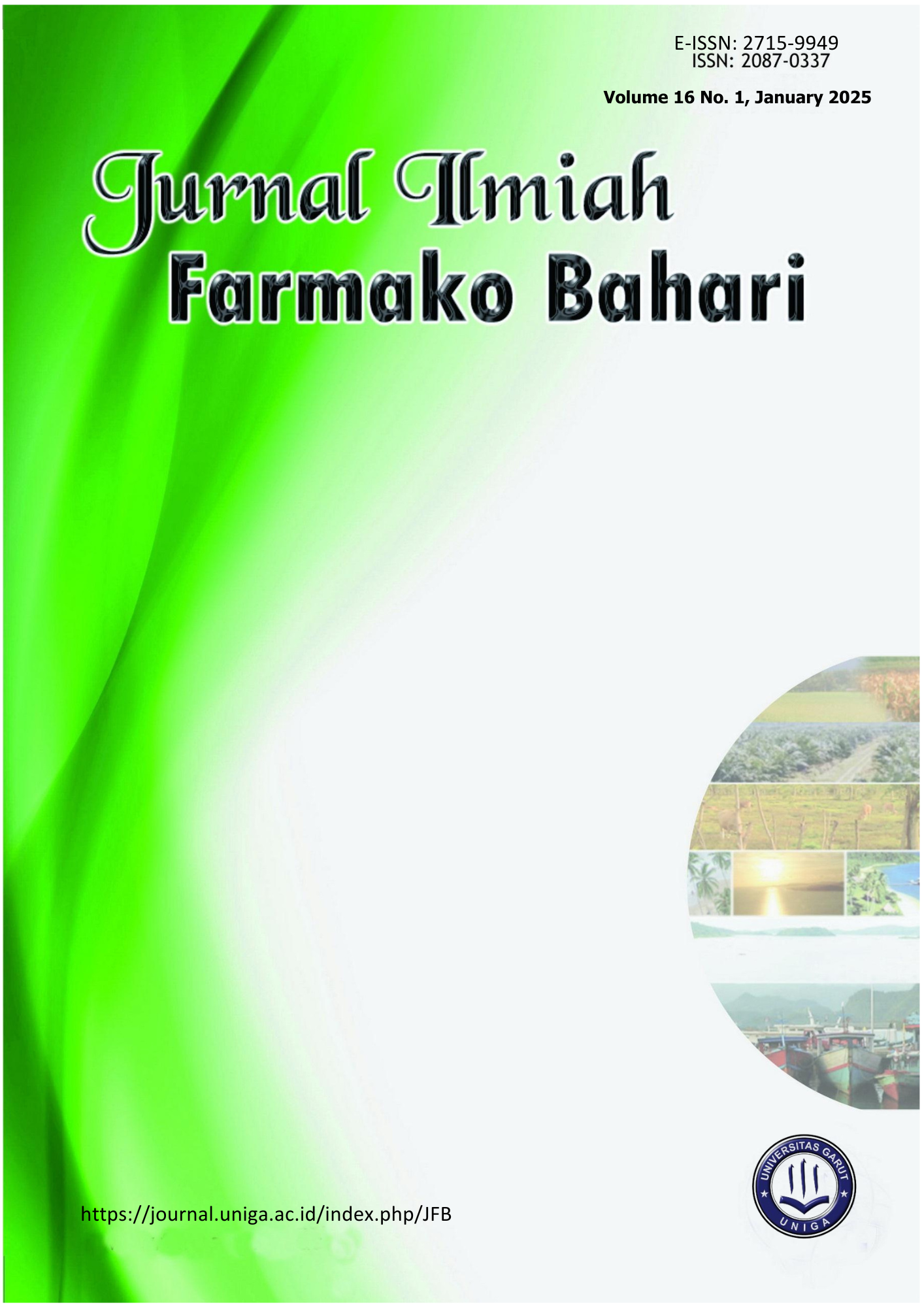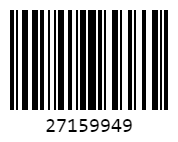KAJIAN SISTEMATIK: OPTIMALISASI STABILITAS RETINOL PADA SEDIAAN KOSMETIKA
DOI:
https://doi.org/10.52434/jifb.v16i1.41811Keywords:
formulasi, kosmetik, retinol, stabilitasAbstract
Retinol adalah bentuk aktif dan turunan generasi pertama dari vitamin A yang yang
memiliki banyak manfaat untuk perawatan kulit, seperti memperbaiki tekstur kulit,
merangsang pembentukan kolagen, dan mengatasi masalah penuaan serta jerawat
yang membuat retinol banyak dibuat dalam sediaan kosmetika. Namun, stabilitas retinol
dalam sediaan kosmetik memiliki banyak tantangan karena rentan mengalami degradasi
akibat paparan faktor eksternal yang dapat memicu efek toksisitas retinol. Sehingga,
review ini bertujuan untuk mengidentifikasi faktor-faktor yang dapat meningkatkan
stabilitas retinol dalam sediaan kosmetik. Melalui kajian literatur dari 15 jurnal
internasional dalam kurun waktu 10 tahun terakhir, ditemukan bahwa penambahan
berbagai eksipien dan zat aktif lain dalam formulasi, penggunaan berbagai metode
pembuatan seperti emulsi, enkapsulasi mikropartikel dan nanopartikel dengan beragam
matriks, serta pemilihan kemasan yang sesuai dapat secara signifikan meningkatkan
stabilitas retinol.
References
1. Zasada M, Budzisz E. Retinoids: Active molecules influencing skin structure formation in cosmetic and dermatological treatments. Postep Dermatologii i Alergol. 2019;36(4):392–7.
2. Neneng Siti Silfi Ambarwati, Tania Salsabila Putri Harfi. Pembuatan buku saku panduan pemakaian retinol untuk mencegah penuaan bagi pemula. J Tata Rias. 2023;12(2):43–53.
3. Haryanti R. Krim pemutih wajah dan keamanannya. Farmasetika.com (Online). 2017;2(3):5.
4. Birru PW, Hilmi IL, Salman S. Riview artikel : retinol pada kosmetika. J Pharm Sci. 2023;6(1):256–60.
5. Widyansari V. Stabilitas fisika dan pH sediaan CC (Color Control) cream yang mengandung virgin Coconut Oil dan Aloe Vera Extract. Calyptra J Ilm Mhs Univ Surabaya. 2015;4(1):1–17.
6. Sugiharta S, Ningsih W. Evaluasi stabilitas sifat fisika kimia sediaan krim ketoconazole dengan metode stabilitas penyimpanan jangka panjang. Maj Farmasetika. 2021;6(1):162.
7. Jun SH, Kim H, Lee H, Song JE, Park SG, Kang NG. Synthesis of retinol-loaded lipid nanocarrier via vacuum emulsification to improve topical skin delivery. Polymers (Basel). 2021;13(5):826.
8. Maggadani BP, Rahmayati R, Rukmana TI, Mulyadi CA. Retinol stability in anti-aging face serum post-opening period. Int J Appl Pharm. 2024;16(4):108–13.
9. Marbawi MI, Salim TA. Mempertahankan keaslian arsip elektronik di era digital berdasarkan tinjauan literatur sistematis. Berk Ilmu Perpust dan Inf. 2019;15(2):149.
10. Gruber J V., Stojkoska V, Riemer J. Retinol has a skin dehydrating effect that can be improved by a mixture of water-soluble polysaccharides. Cosmetics. 2020;7(4):80.
11. Kim I-Y, Seong B-R, Lee S-R. Stabilizing technology of pure vitamin A using triple matrix capsulation. J Korean Appl Sci Technol. 2015;32(4):694–701.
12. Wang PHM, Agach M, Libii M, Chonez S, Gregoire S, Lee B, et al. An eco-friendly system for stabilization of retinol: A step towards attending performance with improved environmental respect. Int J Cosmet Sci. 2023;45(5):581–91.
13. Ding Y, Pyo SM, Müller RH. SmartLipids® as third solid lipid nanoparticle generation - Stabilization of retinol for dermal application. Pharmazie. 2017;72(12):728–35.
14. Pawłowska M, Marzec M, Jankowiak W, Nowak I. Solid lipid nanoparticles incorporated with retinol and Pentapeptide-18—optimization, characterization, and cosmetic application. Int J Mol Sci. 2024;25(18):2–20.
15. Costa JR, Costa AH, Azevedo-Silva J, Tavares-Valente D, Sousa SC, Neto T, et al. Silica microparticles from sugarcane by-products as an encapsulation system for retinoids aimed at topical sustained release. Int J Mol Sci. 2024;25(6):3215.
16. Kim H, Hu Y, Jeong D, Jun BH, Cho E, Jung S. Synthesis, characterization, and retinol stabilization of fatty amide-β-cyclodextrin conjugates. Molecules. 2016;21(7):963.
17. Pawłowska M, Marzec M, Jankowiak W, Nowak I. Retinol and oligopeptide-loaded lipid nanocarriers as effective raw material in anti-acne and anti-aging therapies. life. 2024;14(10):1–19.
18. Goudon F, Clément Y, Ripoll L. Controlled release of retinol in cationic co-polymeric nanoparticles for topical application. Cosmetics. 2020;7(2):29.
19. Shields CW, White JP, Osta EG, Patel J, Rajkumar S, Kirby N, et al. Encapsulation and controlled release of retinol from silicone particles for topical delivery. J Control Release. 2018;278:37–48.
20. Odrobińska J, Niesyto K, Erfurt K, Siewniak A, Mielańczyk A, Neugebauer D. Retinol-containing graft copolymers for delivery of skin-curing agents. Pharmaceutics. 2019;11(8):378.
21. Wang Y, Zhang Q, Wei Y, Et.al. Retinol semisolid preparations in cosmetics: transcutaneous permeation mechanism and behaviour. Sci Rep. 2024;14(1):1–11.
22. Bai D, Hu F, Xu H, Huang J, Wu C, Zhang J, et al. High stability and low irritation of retinol propionate and hydroxypinacolone retinoate supramolecular nanoparticles with effective anti-wrinkle efficacy. Pharmaceutics. 2023;15(3):731.
23. Qomara WF, Musfiroh I, - RW. Review : Evaluasi stabilitas dan Inkompatibilitas sediaan oral liquid. Maj Farmasetika. 2023;8(3):209–23.
Downloads
Published
Issue
Section
License
Copyright (c) 2025 Jurnal Ilmiah Farmako Bahari

This work is licensed under a Creative Commons Attribution-NonCommercial-ShareAlike 4.0 International License.
or all articles published in Jurnal Ilmiah Farmako Bahari, the copyright is retained by the journal. Articles are published under the terms of Creative Commons Attribution-ShareAlike 4.0 International License (CC-BY-SA 4.0) . For Authors:
|


1.png) Download Journal Template
Download Journal Template
.png)









